Moss Wood Newsletter Early Spring News Issue #103 September 2019
Moss Wood 2018 Chardonnay
Moss Wood 2017 Pinot Noir
Moss Wood 2019 Semillon
Moss Wood 2018 Chardonnay
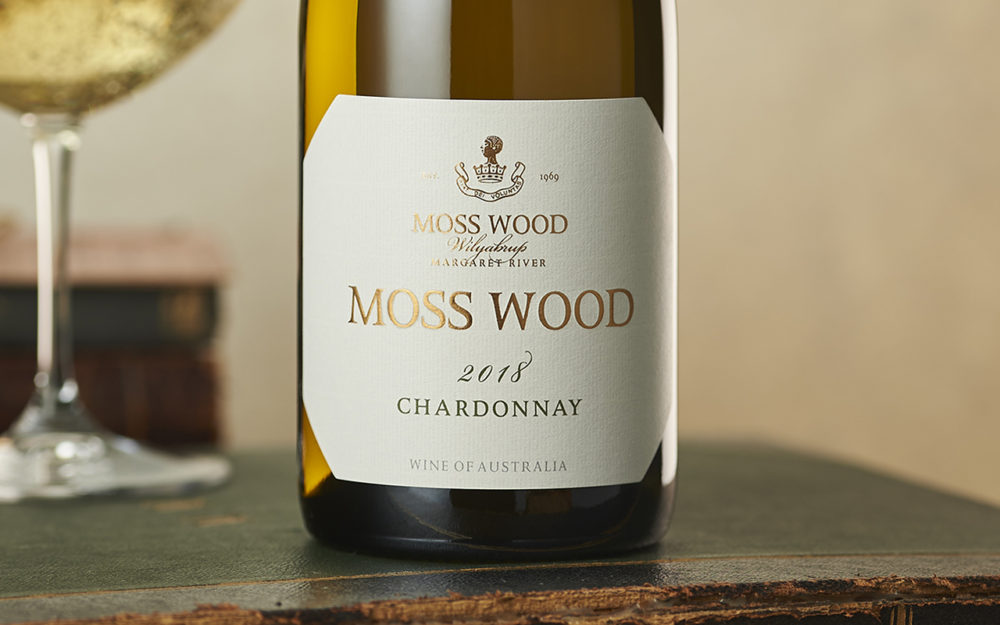
Vintage Notes
Often our wine stories are a narrative of how we struggled against the many challenges Mother Nature threw at us before we finally triumphed, against near impossible odds, to produce a high-quality wine. Well, with the Moss Wood 2018 Chardonnay, there will be none of that. Quite the contrary in fact.
In reviewing the 2017/18 growing season, we were reminded of how good it was - one of those rare years when just about everything worked in our favour. We enjoy them when they come around but often take them for granted. For example, 1991 was very much a vintage that went by without incident. This may sound odd but we often get a pleasant surprise when the young wines start to reveal their quality when really, there should be no surprise at all. We hope you don’t find this boring!
Our Spring weather was near perfect. The calendar year 2017 produced just over 10% above average rainfall, with a total of 1117mm, so the soil was nicely topped up with moisture. However, very conveniently, the flowering period wasn’t too wet and we had regular showers but no downpours, so they did little harm to the process. These were accompanied by temperatures that rarely dropped below 8°C, so the vines loved that as well.
Through Summer, temperatures remained moderate, so while the vines didn’t rush through their ripening, the season was roughly a week longer than average, they made steady progress and reached full maturity of both sugar and flavour with ease. Furthermore, they experienced only 13 hours above 33°C, so there was absolutely no heat stress. In fact, for a while we were concerned temperatures may have been a little too mild but in the end these fears were unfounded. The vines had flowered right on their average date of 5th November and had plenty of time to get the job done.
To note how mild our Summer was, the hottest day was 14th January, when the mercury topped out at 39.1°C but apart from that, the temperature rarely went over 33°C.
We had no issues with disease or damage from pests like the birds and we cruised into the Chardonnay harvest on 7th March. The yield of 6.15 tonnes/ha was down by roughly 10% and the ripeness was 13.5° Baume, very slightly above our average of 13.1.
Production Notes
All the fruit was hand-picked and delivered to the winery where it was whole-bunch pressed. The must was cold settled for 48 hours then the clear juice was racked and seeded with multiple yeast strains for primary fermentation. At approximately halfway through ferment, on 18th March, the juice was racked to wood. All the barrels were 228 litre French oak and 56% were new. The wine also underwent a full malolactic fermentation and once completed, all the barrels were racked, blended and adjusted in stainless steel. The finished wine was then returned to barrel.
On 25th June 2019 all barrels were racked and blended in stainless steel and fining trials were carried out. None of the agents offered any improvement so the wine remained unfined, apart from a bentonite addition for protein stability. To complete the process, the wine was sterile filtered and bottled on 12th July 2019.
Tasting notes:
Colour and condition:
The hue is medium to deep straw with a green tint; condition is bright.
Nose:
All the features that give Moss Wood Chardonnay its distinctiveness are on display. The fruit aromas are of peach, orange marmalade, honeysuckle and quince, plus, of course, the usual roast nuts and oat biscuits. There is a light toasty background from the barrels and a touch of caramel and crème brulee from the malolactic fermentation.
Palate:
The palate is full bodied with good acidity and tannin but this firm structure is well and truly complemented by the fruit flavours. There is an array of peach, lime, quince and caramel that provide length and breadth and the finish shows some soft, toasty oak and just enough tannin for good cellaring.
Cellaring:
As with all Moss Wood Chardonnays it is very attractive now and can certainly be enjoyed as a youngster. However, it will repay patience and we recommend it be cellared for at least 10 years to allow it to show some bottle age. Full maturity will be reached at 20 years of age.
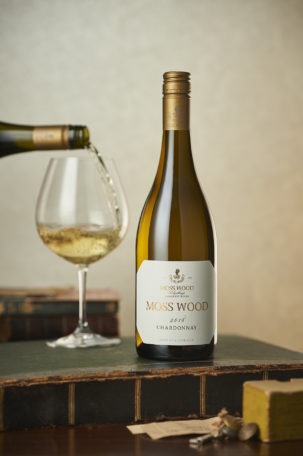
Wine Facts
Median Harvest Date
2018 Chardonnay – 9th March, 2018
Harvest Ripeness
2018 Chardonnay – 13.5°Be
Yields
2018 Chardonnay – 6.15 tonnes/ha
2018 Chardonnay Weather Data
Growing Season Ave Temperature – 19.44⁰C
Number of hours accrued between 18 and 28⁰C – 1195
Number of hours above 33⁰C – 13
Days Elapsed Between Flowering and Harvest
2018 Chardonnay – 122 days
Moss Wood 2017 Pinot Noir
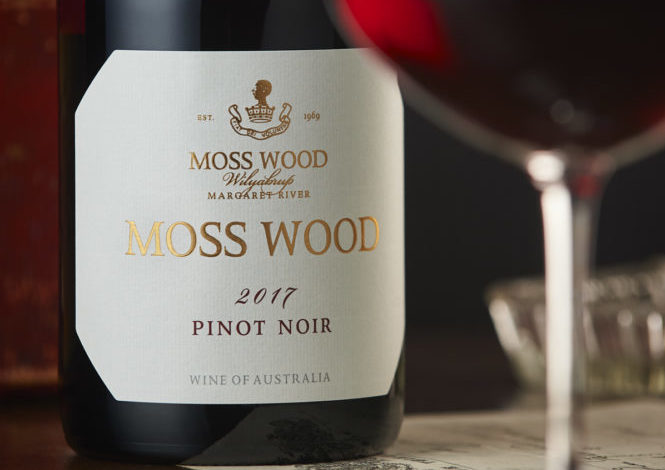
When Dr John Gladstones first published his climate research in 1965, he proposed the as yet unplanted Margaret River area as being suitable for the production of high quality table wine. The consistency of its maritime climate suggested it would be especially good for the Bordeaux varieties, in particular, Cabernet Sauvignon and this made up the vast majority of the early plantings.
However, the pioneers of the region, like Moss Wood founders Bill and Sandra Pannell, approached the new venture with open minds, without the blinkers of existing traditions. Margaret River was a blank canvas and they were determined to try other noble varieties and took two important decisions.
Firstly, going against the trend of the time, they chose not to plant Riesling, believing, quite correctly as it turned out, it needed a more continental climate to make the best wine. Places like the Clare and Eden Valleys in South Australia or the Great Southern region of Western Australia have proven themselves far more suitable.
Secondly, they were very interested in white and red Burgundy, so planted Chardonnay and Pinot Noir. It’s now a matter of history the former has made itself very much at home in our area but until recently, the latter has been something of an enigma.
Since they grow side by side in Burgundy, it makes perfect sense that Pinot Noir should do well, yet Chardonnay has been the show pony. Is there a simple explanation? Although Chardonnay has a tendency to suffer low yields as a result of our mild, damp Spring, it really loves the Summer and Autumn and has consistently made wines of international style and quality. Pinot Noir, on the other hand, hasn’t quite had the same success.
We believe there are several threads to the answer to both production and marketing.
Quite simply, Pinot Noir is not as easy and forgiving to make. It is far more sensitive to vineyard techniques, requiring good fruit exposure and lower yields to achieve quality results. In the winery it is also fussy and needs to be fermented and aged in the correct way. This applies wherever the variety is grown and even in its ancestral home of Burgundy it can be notoriously inconsistent.
Such quirky behavior means consumers have been cautious about purchasing Pinot Noir and it has tended to be sought out by wine nerds prepared to accept its recalcitrance in return for the occasional outstanding bottle. Over the last decade, things have begun to change. The variety is now quite widely planted around the world, with many more winemakers chasing the Holy Grail and the general quality of wine has improved. With this has come much stronger consumer acceptance and Pinot Noir is now a mainstream variety.
In Margaret River, it is not and never has been widely planted. The initial success of Cabernet Sauvignon, meant Pinot Noir was not an attractive choice for many growers, especially given the specialised inputs required in vineyard and winery. Consequently, the wine never achieved the same market penetration or critical acclaim, despite the early success of wines like the Moss Wood 1981 Pinot Noir, thought by many to have been the best Australian Pinot Noir produced up to that point.
Nevertheless, at Moss Wood we have always believed in the quality of our wine and have been very happy to keep producing it, even when the idea of a Margaret River Pinot Noir was anathema to some. We can now point to vintages that have aged beautifully for more than 35 years. Importantly, in the modern wine market, it’s not just nerds who drink it and, in this era, consumers are very happy to consume good Pinot Noir from anywhere, with no preconceived bias.
What remains an important part of the Pinot Noir world is the amount of debate the variety creates. Yes, it’s fussy but this is its great attraction because it produces such a broad range of styles which can polarise opinion. The variations that occur between producers and regions are enormous and lead many critics to opine as to which is best. The answer, of course, is there are numerous opinions and all are correct because beauty is in the eye of the beholder. These debates are at their most intense late in evening after the participants have enjoyed several good bottles with dinner.
Vintage Notes
Turning our attention to the Moss Wood 2017 Pinot Noir, how does it compare with the 39 vintages that have preceded it? The answer is, among the very best and almost a twin for the great 1990. It’s pure coincidence, of course, but the similarities are remarkable. This also means it was a near-copybook season. Flowering was a little over 1 week behind average on 22ndNovember and during this period we had rain on several occasions but none of it heavy and minimum temperatures were mild, rarely dropping below 8°C. Through the rest of the season we had further rains but once again the timing was good, most of it coming before the grapes began to soften.
Temperatures were generally mild and the vineyard received only 34 hours above 33°C. The hottest day of the Summer was a very comfortable 36.9°C on 4th January. These conditions were near perfect for ripening, albeit somewhat slowly and the Pinot Noir casually strolled into its median harvest date of 9th March, 14 days later than average, with a ripeness of 13.6° Baume, very slightly above its average of 13.4. The yield was 6.95 tonnes/hectare, very slightly above the average of 6.40.
Production Notes
The fruit was handpicked and delivered to the winery where it was destemmed into small, open fermenters. The must was chilled and allowed to soak for 48 hours and was then inoculated with multiple yeast strains for primary fermentation. Fermentation temperatures were kept to a maximum of 30°C and each batch was hand plunged 3 times per day. After 18 days on skins the must was pressed to stainless steel tank and underwent malolactic fermentation and once completed, the finished batches were racked to wood. All barrels were 228 litre French oak and 10% were new.
After 19 months in wood, all barrels were racked and blended in stainless steel and fining trials were carried out. None were found to improve the wine so it remained unfined. It was then sterile filtered and bottled on 5th November, 2018.
Tasting notes
Colour and condition:
Medium to deep ruby hue; bright condition.
Nose:
Lifted aromatics of strawberry, quince jelly, roses and cherries. In the background there is an array of Pinot’s complex notes – earth, cumin and mushroom. There are also light, toasty oak notes.
Palate:
The palate has medium to full body with bright fruit flavours. Strawberries, cherries and dark jubes sit over a firm tannin, so the wine has excellent balance; it is lively and intense without being heavy. The performance is completed with some toasty oak on the finish.
Cellaring:
We mentioned above that this wine has many similarities to its 1990 sibling and having tasted that very recently we confidently predict the 2017 will develop beautifully in the cellar for at least 30 years. The only problem for customers may be keeping their hands off it for that long. The bright and generous fruit notes make it a very enjoyable youngster and it should retain those for a least the next 10 years.
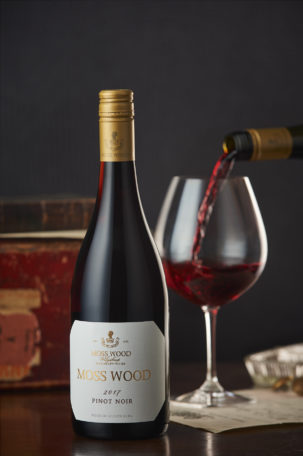
Wine Facts
Median Harvest Date
2017 Pinot Noir – 9th March, 2017
Harvest Ripeness
2017 Pinot Noir – 13.6°Be
Yield
2017 Pinot Noir – 6.95 t/ha
2017 Pinot Noir Weather Data
Growing Season Ave Temperature – 19.34⁰C
Number of hours accrued between 18 and 28⁰C – 993
Number of hours above 33⁰C – 34
Days Elapsed Between Flowering and Harvest
2017 Pinot Noir – 104 days
Moss Wood 2019 Semillon
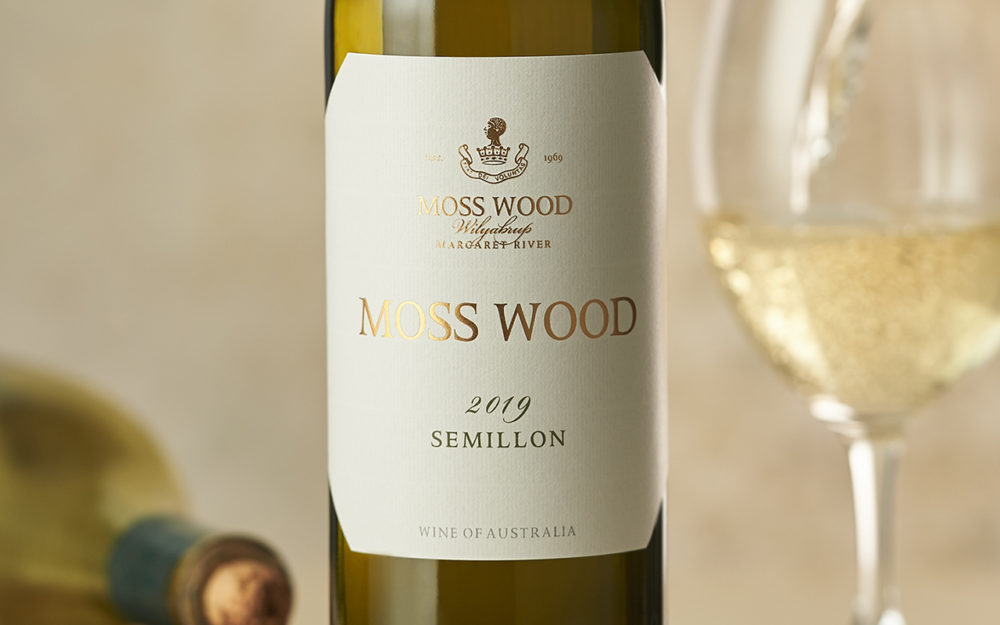
Vintage Notes
Having spent much of this newsletter waxing lyrical about the 2017 and 2018 vintages, we now turn to the 2019 Semillon. From the outset, we at Moss Wood are immensely proud of this wine and its quality. However, technically-speaking, it is the most challenging of the 43 Semillons we have produced.
Initially, the season went quite well but as Spring progressed, the rain kept coming. Through the flowering period, which was just over a week behind the average, courtesy of cool, wet conditions, we had significant rain on 5 days, all interrupting the process. Even more difficult were the 9 days when the temperature dropped below 8°C and especially on 30th November, when it fell to 2.9°C.
The net result of all this delightful weather was a significant reduction in yield. The bunch weights were down by 36% to 109 grams per bunch. However, the fun didn’t end there.
Readers may be aware the Margaret River wine region can suffer significant losses from bird attack, especially silvereyes, although the problem is ameliorated when the Red Gums have a good flowering. This year the blossom was literally nonexistent and the silvereyes were starving. We use nets to keep the birds out and they are very effective, especially when they are only moderately hungry. Normally there is no need to cover all the vineyard and as long as we establish a perimeter of around 30 metres, the birds won’t fly over the nets to the unprotected crop. In 2019, just about every berry not protected by net was attacked. This also meant any sections where the nets may have been blown up by the wind, or where there were holes, the birds got in and created havoc. They even did their old trick of dive-bombing the nets and bouncing off in a desperate attempt to get to the fruit.
The damage to the Semillon was so bad, we nearly didn’t pick it. There remained some sound fruit and we had to weigh up the difficulty and cost of the process, given the degree of care required in picking and sorting. It was tedious and time consuming to say the least.
In a fine effort by the Shawkat and his team of Hazari pickers, assisted by the Moss Wood vintage crew, all the bunches were picked and meticulously sorted and all damaged fruit left on the ground. “Even Clare and Keith got their hands dirty!” was heard! Once delivered to the winery, the fruit was further selected to clean out the last of the damage and then it was whole-bunch pressed to extract the juice.
When we weighed all the sorted bins, we had the grand total of just over 5 tonnes of grapes giving a mighty yield of 3.25 tonnes per hectare, some 69% below average! There were wry smiles all round.
What must not be lost in this tale of woe was the fact the Summer had been delightful, with consistently mild temperatures and the Semillon had ripened beautifully, if somewhat slowly. In the end, it was harvested on 28th March, some 17 days later than usual but had reached 13.1° Baume, slightly ahead of its average of 12.7.
Production Notes
The pressed juice was transferred to stainless steel tank and settled for 48 hours, after which it was racked and seeded with multiple yeast cultures for primary fermentation, which was maintained at 18°C. Once completed, the finished wine was racked and fining trials carried out to determine if we could improve the tannin balance. In a tribute to the quality of the year, none of the agents improved the wine and it was treated only with bentonite for protein stability.
In keeping with our philosophy of bottling the Semillon as soon as possible to retain fruit freshness, it was sterile filtered and bottled on 12th July, 2019.
If, in the future, a member of the Moss Wood team is heard to be strident in their support for, or defence of, the 2019 Semillon, please humour them gently and keep in mind they are immensely proud of the wine and the effort that went into its production.
Tasting notes
Colour and condition:
Pale straw hue; condition is bright.
Nose:
A very typical Moss Wood Semillon nose with fruit aromas of figs, honey and rock melon; there is a light background of green apple; almost nashi pear and cheddar cheese.
Palate:
The wine immediately presents as full-bodied with generous mouthfeel; the flavours of fig, pear, green apple and lemon sorbet sit over fresh acid giving good lift; there is length and persistence and the finish has the right amount of tannin to support long term cellaring.
Cellaring:
As with all Moss Wood Semillons, the cellaring advice is quite straightforward. The wine currently drinks very well and can be enjoyed for its generous youthful fruit flavours. The bottle bouquet of toasty and buttery notes will take at least a decade to play a significant role and a further 10 years after that before they dominate. Therefore, we expect it to reach full maturity at around 25 years old and should maintain that for at least a further 10 years
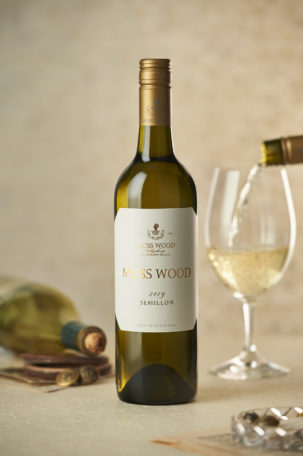
Wine Facts
Median Harvest Date
2019 Semillon – 28th March, 2019
Harvest Ripeness
2019 Semillon – 13.1°Be
Yield
2019 Semillon – 3.25 t/ha
2019 Semillon Weather Data
Growing Season Ave Temperature – 18.79⁰C
Number of hours accrued between 18 and 28⁰C – 1158
Number of hours above 33⁰C – 6
Days Elapsed Between Flowering and Harvest
2019 Semillon – 121 days
Order
OUR WINES:
Contact
MOSS WOOD:
Location: 926 Metricup Road, Wilyabrup WA
Postal: PO Box 225, Cowaramup WA 6284
Phone: +61 8 9755 6266
Fax: +61 8 9755 6303
Follow us on
SOCIAL MEDIA:
